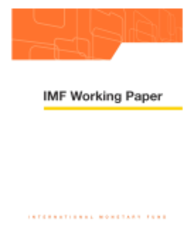
Singapore's Unique Monetary Policy : How Does it Work?
The Monetary Authority of Singapore, instead of relying on short-term interest rates or monetary aggregates as its monetary policy instrument, conducts policy by managing the trade-weighted exchange rate index (TWI). This paper investigates how this operating procedure actually works. For empirical purposes, it assumes the authorities follow a reaction function that aims the TWI at stabilizing expected inflation and maintaining output at potential. A partial adjustment mechanism is included to dampen the actual changes in the exchange rate. The estimates confirm that the major focus of monetary policy in Singapore is controlling inflation. The estimated changes in the TWI track the actual change relatively well, and the estimated parameters are as expected. Accordingly, they support the hypothesis that monetary policy in Singapore can be described by a forward-looking policy rule that reacts to both inflation and output volatility. The results suggest that Singapore's monetary policy has mainly reacted to large deviations in the target variables, which is consistent with monetary policy's medium-term orientation.
Publication date: January 2004
ISBN: 9781451842722
$15.00
Add to Cart by clicking price of the language and format you'd like to purchase
Available Languages and Formats
| English |
Prices in red indicate formats that are not yet available but are forthcoming.
Topics covered in this book
This title contains information about the following subjects.
Click on a subject if you would like to see other titles with the same subjects.
Inflation , Inflation , exchange rate , monetary policy rules , monetary authority , monetary economics , Open Economy Macroeconomics
Summary
Copyright © 2010 - 2025
Powered by:
AIDC



